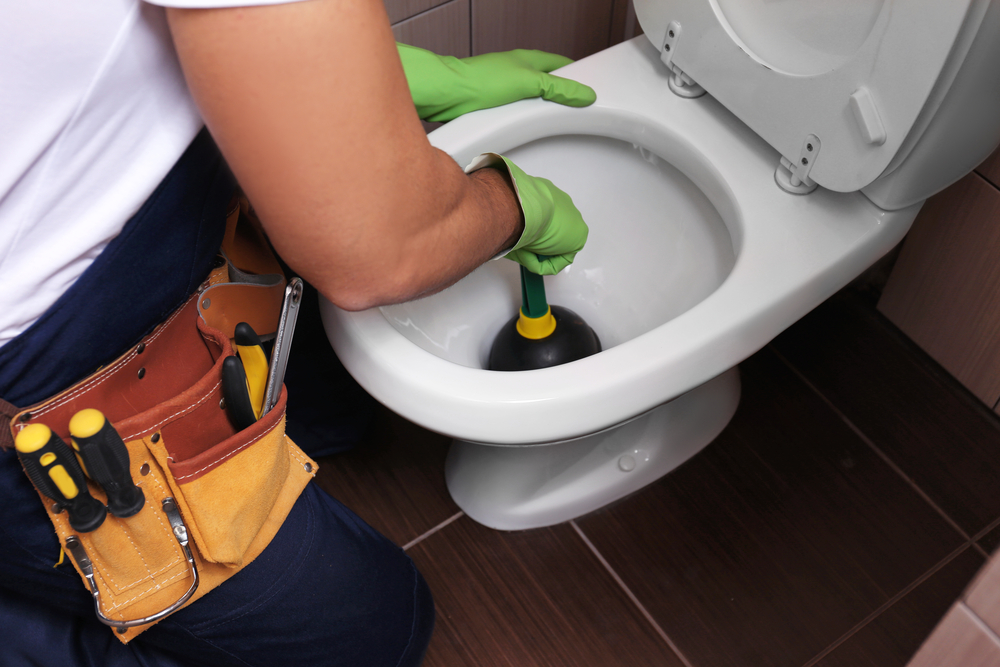
If you’re wondering how to stop a toilet from overflowing, you may be feeling panicked and not sure what to do. With misdirected water or sewage, it’s possible to end up with quite a mess on one’s hands, so it can feel like you need to act fast. But don’t worry—we’re here to help! By sticking to the following eight steps instead of panicking, you will be able to address the issue of toilet overflow without making an even bigger mess or plumbing project for yourself. Remember, as long as you’ve cut off the supply of water to the toilet bowl and stopped flushing, you’re on track to contain the mess and get started fixing your toilet.
In this article, we will walk you through the simple steps you will need to take to stop your toilet from overflowing, from rigging your float down to plunging. Keep reading for more information on what to do if your toilet overflows!
1. Identify the problem! If you know that your toilet is clogged, it’s important to stop flushing immediately. It can be tempting to try to “flush” the problem away when faced with a clogged toilet; we can justify this because every now and again, it happens that we can’t quite get everything in one flush. Sometimes, this problem is serendipitously solved with a second, well-timed flush! However, other times, the toilet is simply clogged. If you have clogged your toilet, repeated flushing is only going to make the problem worse.
2. Close the flapper. Now that you’re ready to acknowledge that you’ve clogged the toilet, it’s time to take action! First, look inside the toilet tank until you see the flapper located at the bottom. It will appear like a rubber, circular valve with a lever or chain attached. Push this closed; this action stops water from moving from the tank into the bowl.
3. Shut off the toilet’s water valve. The next step is to stop the flow of water from your interior plumbing to the toilet by shutting off the main water valve! This is typically located at the back end of your toilet, near where it meets the wall, and is generally accomplished by a simple twist of the wrist. (Position the valve perpendicular to the line in order to switch it off!)
4. Locate the float. Your toilet’s float will usually look like either a small cup or a ball attached to a lever traveling vertically from the depths of the tank. Use a piece of twine, wire, duct tape, or some other handy material to secure the float in a stable position. This prevents more water from entering the bowl.
5. Reduce excess water in the bowl. There’s no sense using a plunger on a toilet bowl that’s overfull. For this step, simply find a cup or a similar object capable of transferring excess water to the sink to be drained away.
6. Dry and disinfect the floors. Use dry rags or towels to soak up the overflow and wash with bleach and hot water after. It’s crucial to sterilize every surface that may have come into contact with excess toilet bowl water in order to maintain a clean environment in your home, especially if you have small children or pets, as this becomes a safety issue. It is important to dry the floors before the next step to avoid slipping hazards!
7. Get the plunger out! Locate your plunger and don your rubber gloves. Remove any blockages by using the head of the plunger or your gloved hands, and plunge the toilet until you see and hear that water is moving through the bottom of the toilet. (In some cases, though rare, you will need to call a plumber to come and snake the toilet for you—but this is generally only in instances where foreign material, debris, or trash has made its way to your toilet bowl.)
8. Execute the final flush. When you’ve got things flowing from the bowl again, it’s time to return the toilet back to its normal operating mode. Allow your float to bob freely again, reassemble the toilet, and turn the water back on. Flush once more. If your toilet continues to overflow, repeat steps 2-7 again. If, after repeated plunging, your toilet still wants to overflow, it’s time to call a professional plumber!
Rooter John: Emergency Plumber Services in the LA Area
Fortunately for the average homeowner, following these eight steps is a relatively simple way to rectify the problem of an overflowing toilet at home. By cutting off your toilet’s water supply, you are able to better address cleanup and repairs in a controlled environment. From there, it’s a simple matter of plunging and sanitation!
While some plumbing problems can be tackled by an untrained individual, for persistent or more serious problems, you will need a reliable plumbing service to protect your assets and your loved ones. Are you looking for a plumber you can trust in the LA area? Contact Rooter John today for a quote!
